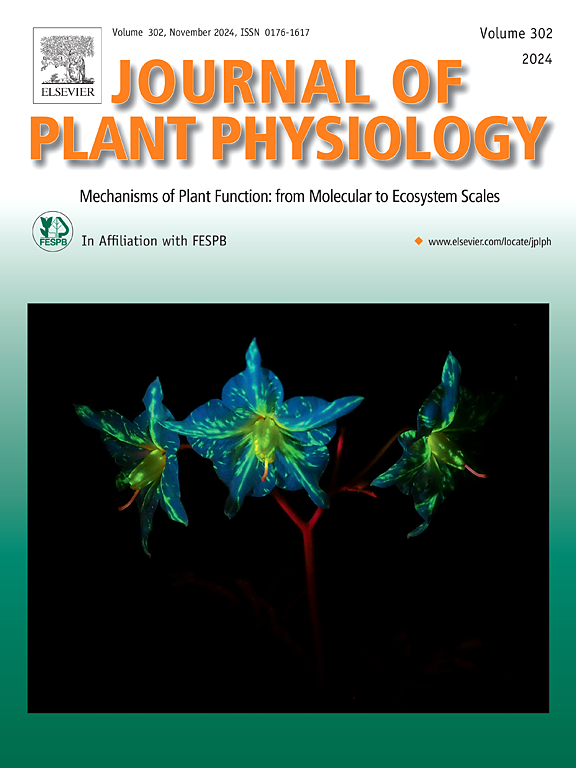蔗糖合成酶在植物生理学中发挥多重作用的酶
IF 4
3区 生物学
Q1 PLANT SCIENCES
引用次数: 0
摘要
蔗糖合成酶(SuS)是调节植物蔗糖代谢的关键酶,参与蔗糖转化为二磷酸尿苷-葡萄糖和果糖的可逆反应。它在促进直根发育、淀粉合成、纤维素合成、提高植物固氮能力、糖代谢以及果实和种子发育等方面发挥着重要作用。最近的研究表明,SuS 对干旱胁迫、寒冷胁迫和涝害胁迫等非生物胁迫有反应,尤其是在涝害胁迫中。本文全面综述了 SuS 的基本特性、生理功能和信号转导途径,旨在为其进一步研究奠定理论基础。本文章由计算机程序翻译,如有差异,请以英文原文为准。
Sucrose synthase: An enzyme with multiple roles in plant physiology
Sucrose synthase (SuS) is a key enzyme in the regulation of sucrose metabolism in plants and participates in the reversible reaction of sucrose conversion to uridine diphosphate-glucose and fructose. It plays an important role in promoting taproot development, starch synthesis, cellulose synthesis, improving plant nitrogen fixation capacity, sugar metabolism, and fruit and seed development. Recent studies have shown that SuS responds to abiotic stresses such as drought stress, cold stress and waterlogging stress, especially in waterlogging stress. This paper provides a comprehensive review on the basic properties, physiological functions, and signal transduction pathways of SuS, aiming to establish a theoretical foundation for its further research.
求助全文
通过发布文献求助,成功后即可免费获取论文全文。
去求助
来源期刊

Journal of plant physiology
生物-植物科学
CiteScore
7.20
自引率
4.70%
发文量
196
审稿时长
32 days
期刊介绍:
The Journal of Plant Physiology is a broad-spectrum journal that welcomes high-quality submissions in all major areas of plant physiology, including plant biochemistry, functional biotechnology, computational and synthetic plant biology, growth and development, photosynthesis and respiration, transport and translocation, plant-microbe interactions, biotic and abiotic stress. Studies are welcome at all levels of integration ranging from molecules and cells to organisms and their environments and are expected to use state-of-the-art methodologies. Pure gene expression studies are not within the focus of our journal. To be considered for publication, papers must significantly contribute to the mechanistic understanding of physiological processes, and not be merely descriptive, or confirmatory of previous results. We encourage the submission of papers that explore the physiology of non-model as well as accepted model species and those that bridge basic and applied research. For instance, studies on agricultural plants that show new physiological mechanisms to improve agricultural efficiency are welcome. Studies performed under uncontrolled situations (e.g. field conditions) not providing mechanistic insight will not be considered for publication.
The Journal of Plant Physiology publishes several types of articles: Original Research Articles, Reviews, Perspectives Articles, and Short Communications. Reviews and Perspectives will be solicited by the Editors; unsolicited reviews are also welcome but only from authors with a strong track record in the field of the review. Original research papers comprise the majority of published contributions.
 求助内容:
求助内容: 应助结果提醒方式:
应助结果提醒方式:


